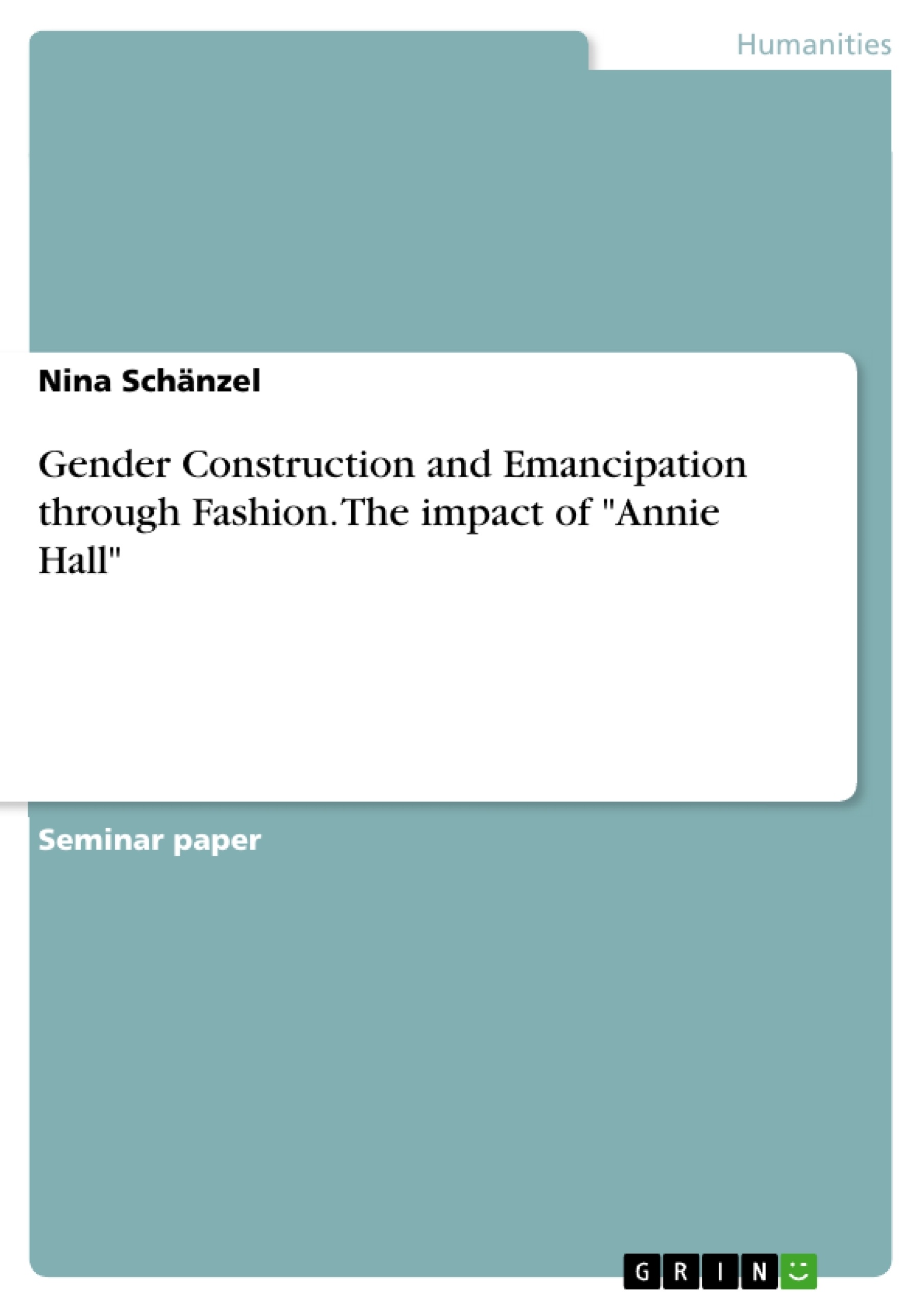"Annie Hall" was revolutionizing for the romantic comedy genre and a turning point for both the director Woody Allen and his muse Diane Keaton. This work elaborates on how a movie changed the way women dressed and perceived themselves. It draws a connection between gender and fashion, as fashion was and is an important medium in the emancipation of women. Gender roles and the expectation that come with them are still present today. Our cloths are an outer representation of gender which also works inwards, with its masculinity as well as femininity are still being produced and maintained separately from each other today.
"Annie Hall" marked Woody Allen’s start as a serious filmmaker in Hollywood, showing that he could not only make light comedies and slapstick but also touch on more deeper topics. "Annie Hall" was a turning point in his career, it catapulted him, but also Diane Keaton, into the mainstream of Hollywood. Many unknown actors that had small parts in the movie, went on and became famous like Jeff Goldblum or Sigourney Weaver, which had her debut on "Annie Hall".
Table of Contents
- Introduction
- The influence of Annie Hall
- The romcom genre revised
- The real-life Annie and Alvy
- The Annie Hall style
Objectives and Key Themes
This text aims to examine the influence of the film "Annie Hall" on the fashion and social landscape of the 1970s. It explores the film's depiction of gender construction and emancipation through fashion, analyzing the style of the main character and its impact on real-life trends.
- Fashion as a reflection of social change
- The impact of "Annie Hall" on the romantic comedy genre
- The blurring of gender lines through fashion
- The role of fashion in female empowerment
- The influence of the 1930s fashion on the "Annie Hall" style
Chapter Summaries
- Introduction: This chapter introduces the film "Annie Hall" as a turning point in Woody Allen's career and discusses its impact on the fashion industry. It highlights the character of Annie Hall as a symbol of a modern, emancipated woman.
- The influence of Annie Hall: This chapter analyzes how "Annie Hall" revolutionized the romantic comedy genre, showcasing a more realistic and in-depth portrayal of relationships. It also explores how the film deviates from typical romantic comedy tropes, particularly through its unconventional characters and lack of a traditional happy ending.
- The real-life Annie and Alvy: This chapter delves into the personal aspects of "Annie Hall," drawing connections between the characters and the real-life figures of Woody Allen and Diane Keaton. It examines the biographical elements incorporated into the film and the close connection between the actors and their roles.
- The Annie Hall style: This chapter focuses on the film's iconic fashion, exploring the influence of 1930s menswear on the character of Annie Hall's wardrobe. It examines the role of costume designer Ruth Morley in shaping the film's style and the influence of Ralph Lauren's designs on Diane Keaton's look.
Keywords
Key terms and concepts explored in this text include gender construction, fashion, emancipation, "Annie Hall," romantic comedy, 1930s fashion, Ralph Lauren, Diane Keaton, and Woody Allen.
- Quote paper
- Nina Schänzel (Author), 2019, Gender Construction and Emancipation through Fashion. The impact of "Annie Hall", Munich, GRIN Verlag, https://www.grin.com/document/540358



